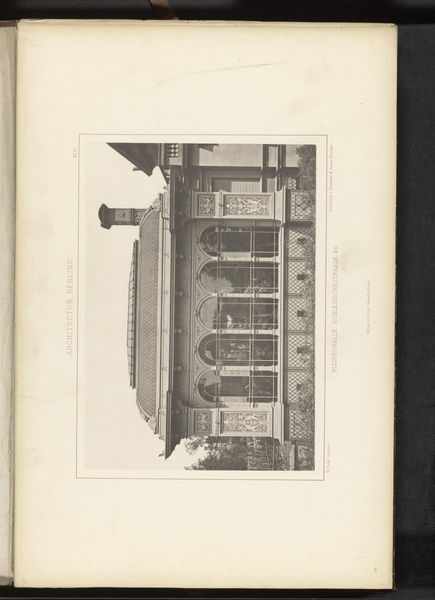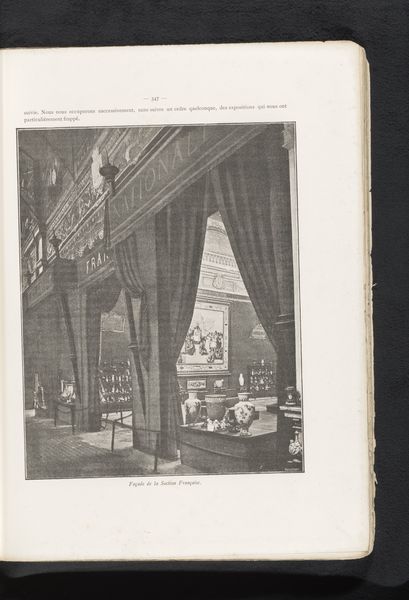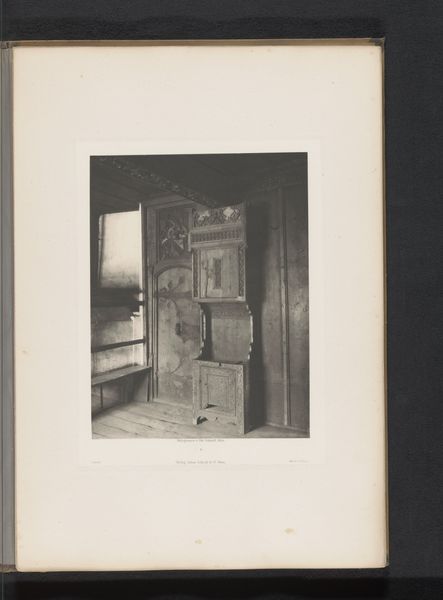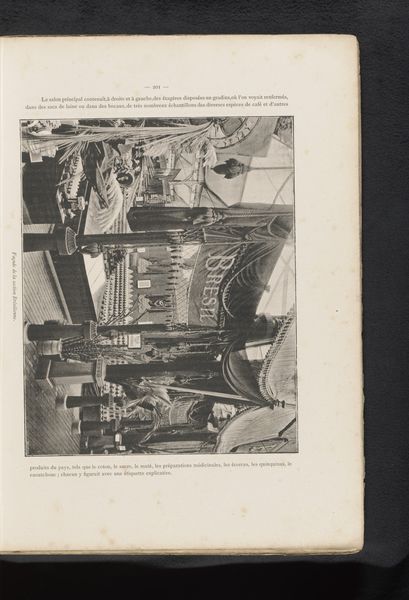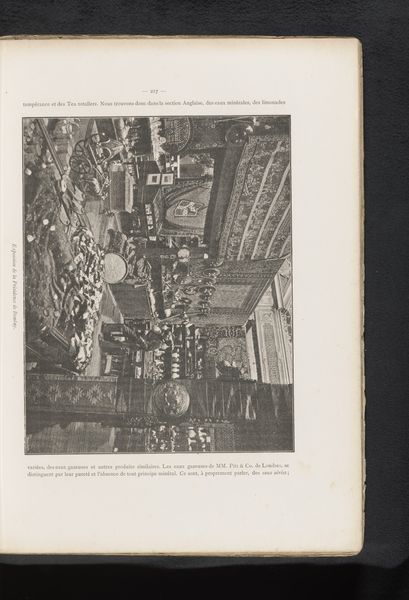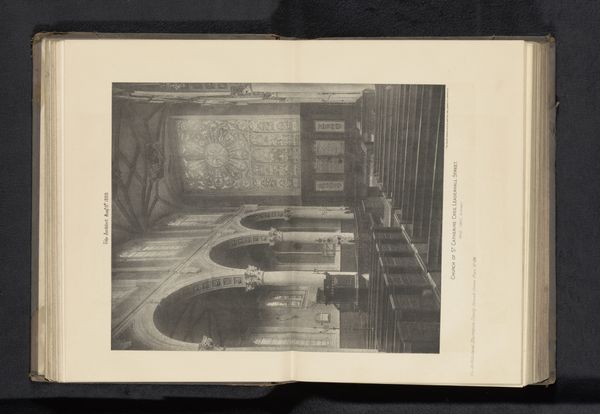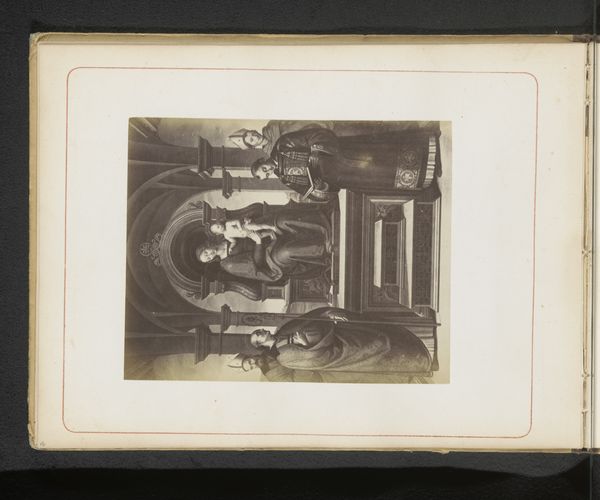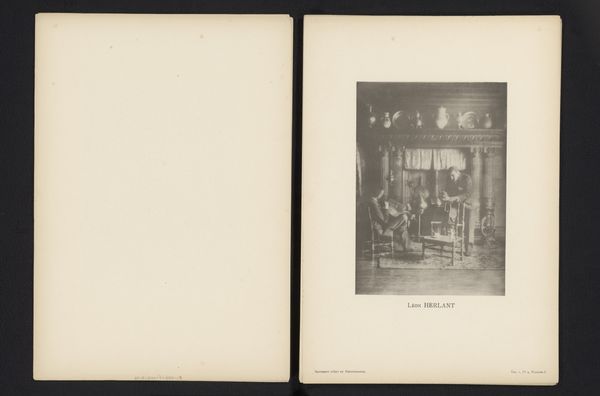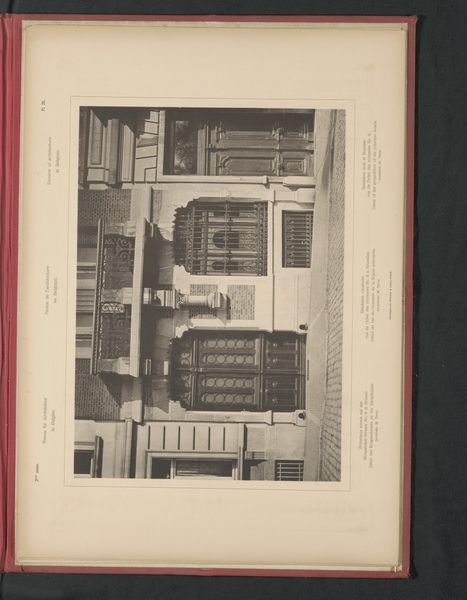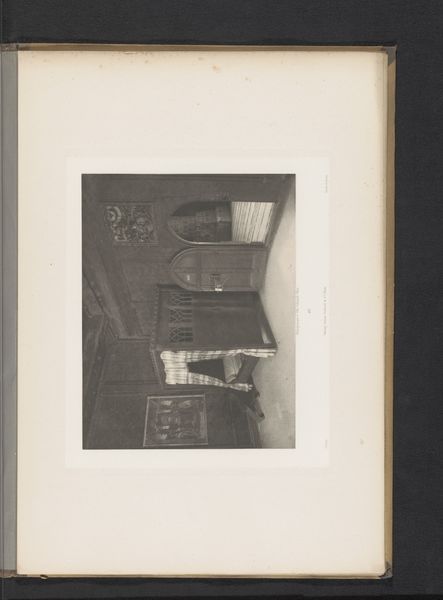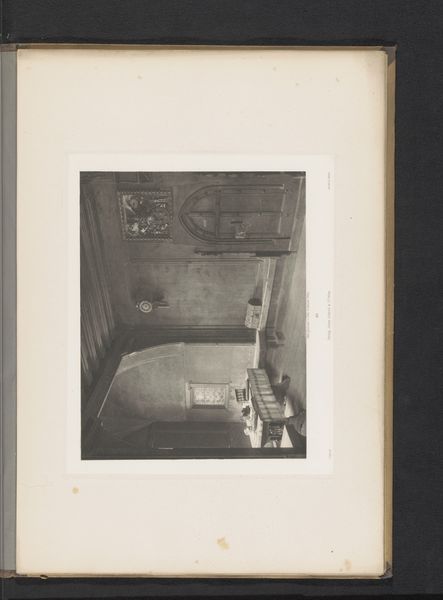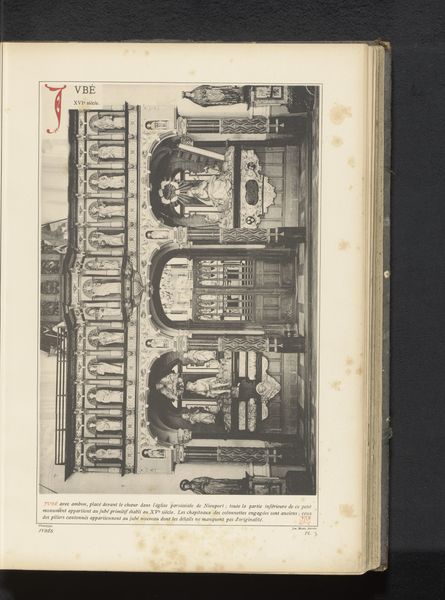
Gezicht op een opstellingen van nationale fabricaten in het Franse deel van de Wereldtentoonstelling van 1885 in Antwerpen before 1885
0:00
0:00
print, photography, engraving
# print
#
impressionism
#
photography
#
engraving
#
realism
Dimensions: height 226 mm, width 276 mm
Copyright: Rijks Museum: Open Domain
Curator: Here we have a fascinating piece entitled "Gezicht op een opstellingen van nationale fabricaten in het Franse deel van de Wereldtentoonstelling van 1885 in Antwerpen." It gives us a glimpse into the French section of the World's Fair in Antwerp, showcasing national products. This print combines photography and engraving and allows us to consider notions of national identity during the age of industrialization. Editor: My initial reaction is one of curiosity, bordering on skepticism. It feels almost like a staged photograph, cleaned and presented to reinforce a very particular, idealized vision of French craftsmanship and national pride. The high ceilings and ornate decorations certainly create a sense of grandeur. Curator: That's precisely what I find interesting here. World’s Fairs were fundamentally exercises in nation-building, opportunities for countries to project power, innovation, and cultural prestige on an international stage. This print would have circulated as propaganda of sorts, bolstering national identity by associating it with artistic achievement. The careful compositions featuring arranged artwork tell a particular story about French culture. Editor: It’s compelling to consider the unseen hands shaping the narrative. Who curated this particular display? Whose vision of "national fabricates" was deemed worthy of representation? And how did it reflect or perhaps distort the lived realities of the French artists and laborers whose creations were being showcased? This curated display begs questions about power dynamics, who has it, and what it conceals. Curator: Absolutely. The artist here isn't simply documenting; they're participating in a carefully constructed spectacle. Even the medium itself is revealing; combining photography with engraving allows for both accuracy and embellishment, underscoring the deliberate crafting of an image intended to influence perception. Editor: Looking closer, it appears these may not be just works of art. They are labeled as ‘national fabricates’. So where do we draw the line? Is it art, or industrial design? Or is that a deliberate blurring, where industrial manufacturing is celebrated as artistic innovation? What message is sent by positioning manufactured goods and artwork in the same line of sight? Curator: Well, these exhibitions functioned as engines of economic growth and geopolitical power, promoting imperial projects and solidifying existing hierarchies. But at the same time, they enabled the spread of new ideas, technology, and culture around the globe. This intersection creates new meanings in our analysis and challenges established ways of thinking about national heritage. Editor: In conclusion, it makes me think about the layers of propaganda that art can perform, even as it may display other valuable artistic purposes. Curator: It has certainly reminded me that art exists within complex systems of power, where image, ideology, and political agendas converge.
Comments
No comments
Be the first to comment and join the conversation on the ultimate creative platform.

